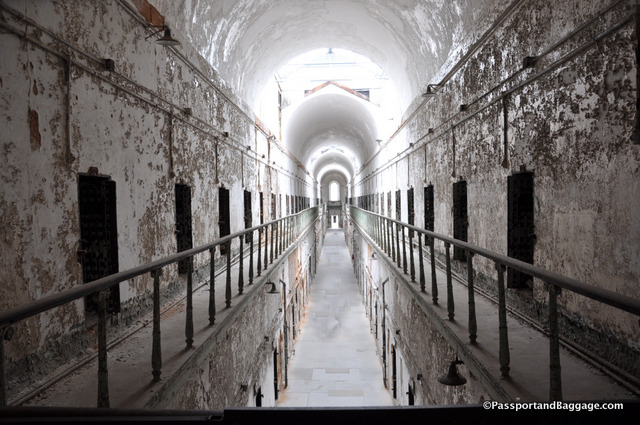2027 Fairmount Avenue
Philadelpha, PA
 I am in Philadelphia, Pennsylvania. My habit in any town is to seek the oddball. After an entire morning spent at the Philadelphia Art Museum, I headed out to an oddball spot. Before explaining that however, I must say, that if you have the opportunity to visit the Philadelphia Art Museum, please do. Plan on exhausting yourself. It has one of the vastest collections in the United States, and all of it is absolutely first rate. I have never seen so many great old masters on display in one location, to say nothing of their Asian Art Collection with an actual tea house, and a French Cloister in another room. Just spectacular.
I am in Philadelphia, Pennsylvania. My habit in any town is to seek the oddball. After an entire morning spent at the Philadelphia Art Museum, I headed out to an oddball spot. Before explaining that however, I must say, that if you have the opportunity to visit the Philadelphia Art Museum, please do. Plan on exhausting yourself. It has one of the vastest collections in the United States, and all of it is absolutely first rate. I have never seen so many great old masters on display in one location, to say nothing of their Asian Art Collection with an actual tea house, and a French Cloister in another room. Just spectacular.
 On to the oddball. This is the Eastern State Penitentiary, a former American prison located in the Fairmount section of Philadelphia that was operational from 1829 until 1971. The penitentiary refined the revolutionary system of separate incarceration with no human contact in order to find God and do “pentinence” emphasizing principles of reform rather than punishment.
On to the oddball. This is the Eastern State Penitentiary, a former American prison located in the Fairmount section of Philadelphia that was operational from 1829 until 1971. The penitentiary refined the revolutionary system of separate incarceration with no human contact in order to find God and do “pentinence” emphasizing principles of reform rather than punishment.
 Its unique wagon wheel design originally housed inmates in cells that could only be accessed by entering through a small exercise yard attached to the back of the prison; only a small portal, just large enough to pass meals, opened onto the cell blocks. As time went on, and more prisoners were added, this proved unfeasible. So two wings were added with two floors and designs we think of as prisons today.
Its unique wagon wheel design originally housed inmates in cells that could only be accessed by entering through a small exercise yard attached to the back of the prison; only a small portal, just large enough to pass meals, opened onto the cell blocks. As time went on, and more prisoners were added, this proved unfeasible. So two wings were added with two floors and designs we think of as prisons today.
 Eventually, the prison became too expensive to operate and was abandoned. It lay empty for over 20 years. In that time it became so overgrown with trees and cats, it was almost impossible to get through. It was slated for demolition and a condominium project when a very small group of preservationists and prison historians banded together to convince the state to restore it and open it up as an educational and tourist operation. In 1994, Eastern State opened to the public for historic tours.
Eventually, the prison became too expensive to operate and was abandoned. It lay empty for over 20 years. In that time it became so overgrown with trees and cats, it was almost impossible to get through. It was slated for demolition and a condominium project when a very small group of preservationists and prison historians banded together to convince the state to restore it and open it up as an educational and tourist operation. In 1994, Eastern State opened to the public for historic tours.
 Notorious criminals such as bank robber Willie Sutton and Al Capone were held inside When the building was erected it was the largest and most expensive public structure ever constructed, quickly becoming a model for more than 300 prisons worldwide. There is even a map of all the prisons around the world that adopted this method, it is somewhat haunting.
Notorious criminals such as bank robber Willie Sutton and Al Capone were held inside When the building was erected it was the largest and most expensive public structure ever constructed, quickly becoming a model for more than 300 prisons worldwide. There is even a map of all the prisons around the world that adopted this method, it is somewhat haunting.
